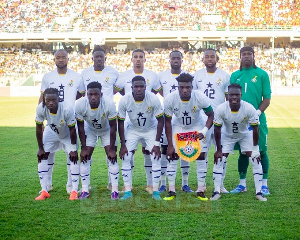“Power and change lies in asking questions”- Kweku Aacht
Earlier today, I sat behind my computer examining Ghana’s National Energy Policy for hours. As I digested the foreword weaved by the Minister of Energy, tears were auctioned from their ducts. I couldn’t control it. I took my phone and messaged my very close friend and team member about how emotional I was growing about how things were looking for the future of young people in this country. All she said was, “sorry”.
Exactly 3 years ago, when I was consumed under passion for environmental activism and stood in the heart of the British Museum in London to pledge my time, strength and resources to save the planet, little did I imagine that there comes a time when activism would just mean shedding tears for the future that looks so bleak and uncertain. As I took my quill to write this note in very simple and plain language, I wished to tell the story as it is, paint the future as it looks now.
This is the math I don’t get, the calculations I can’t wrap my head around. This is the National Energy Policy of the Republic of Ghana planned for me and you and for our future. Please let’s do this simple math:
1.Currently Ghana produces about 2,170MW of power. The mix is about 60% hydro-electric, 1% renewable energy and the rest thermal energy. We should note that it took this country over 40yrs to produce this 2,170MW. The Akosombo Dam was built in 1961;
2.According to our National Energy Policy, Ghana will produce 5,000MW by 2015. Please note that this means more than a double (2x) of the current production. Infact, the document is literally saying that, we would produce 2,830MW more by 2015. We are in 2013, so technically we have 2 years more to hit this set target;
3. Technically and realistically, the options available to get to this 5000MW are hydro-electric, thermal and solar:
A. Interestingly, the Bui Dam currently under construction has an installed capacity of 400MW and even with that, water level is a major issue because of climate change. In addition to that it has taken us more than 4years to build the Bui Dam;
B. The Aboadze thermal plant has an installed capacity of 550MW and a maximum capacity of 682MW. I would leave you to guess how many years it would take to build one thermal plant;
C. The largest solar power plant in Africa would start construction in 2013 in Nzema and become operational in 2015. It would produce 155MW and increase the mix for renewable energy from 1% to 10%.
The first big question The underwhelming question we have been forced to ask is- where on earth or heaven would the 2,830MW come from? This is baffling and shocking. Growing in an environment where it is almost a taboo to ask questions and even a mark of disrespect to question adults, I almost understand why young people haven’t asked these questions. It is our future we are talking about so we deserve to know. The fact is that ‘power and change lies in asking questions’.
Let’s go a step forward. The life expectancy rate in Ghana as at 2011 was 64.2years. The combined average age of people running this country and making decisions for us, specifically, the President and cabinet, Ministers in Ministries, MPs, Civil servants, foreign missions, high commissioners, technocrats, experts and other government auxiliary should be more than 60years. These people always have 4-8years to make decisions for everyone including young people. This age bracket of decision makers are supposed to make decisions to affect our future and expected to hand over power to us, at least by the next 10-20years. According to the National Youth Policy definition of youth (15-35yrs), the fraction of our population that is youth is 32.8%. (You might do the math to know the population of youth by 10-20years).
The second big question The question is shouldn’t we, young people, as a matter of fact be a major part of this decision making process as it is our future that is being discussed but not them? My very good friend made a somehow funny but striking comment, “the poor man is being discussed but he is not in attendance of that meeting”.
There are 2 ways to open the doors of any transformational change – presidential leadership and public advocacy and action. We are good with the advocacy but where is the action? For young people to be able to act for change, we need 3 things- leadership, access to information and the ability to speak up. The choice is ours to make. Act or watch as our future is decided without us.
“If you don’t like something, make any attempt to change it; if you don’t do that, don’t complain”
Gideon Commey (Campaigns Team, Ghana Youth Environmental Movement-GYEM)
Opinions of Wednesday, 9 January 2013
Columnist: Commey, Gideon


















